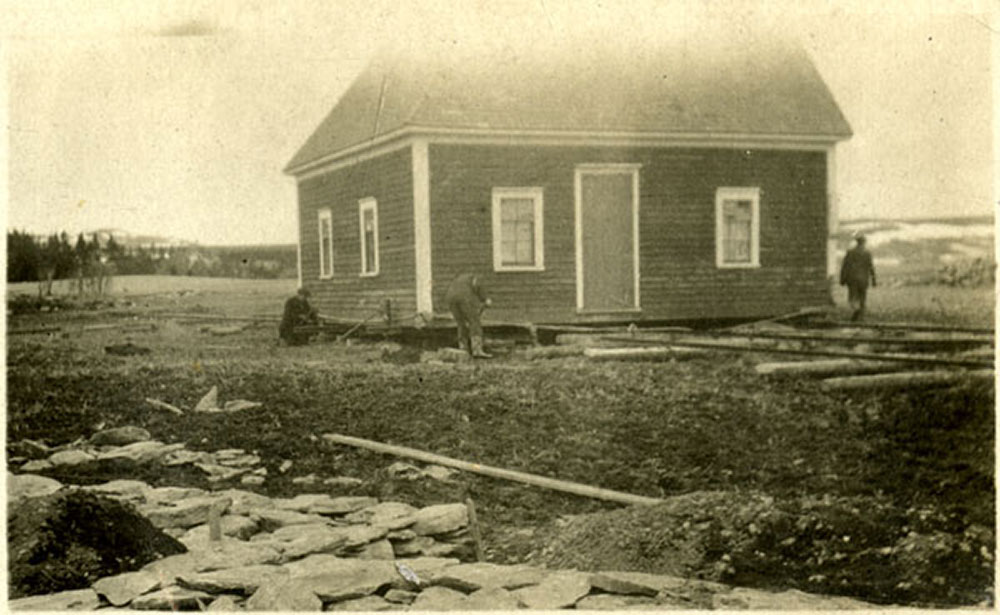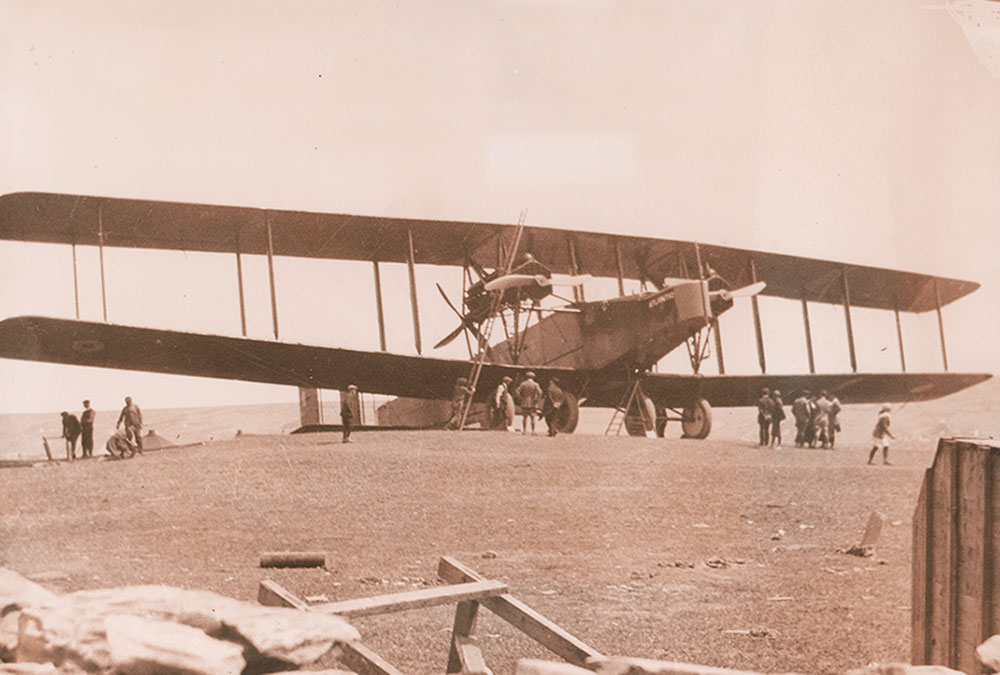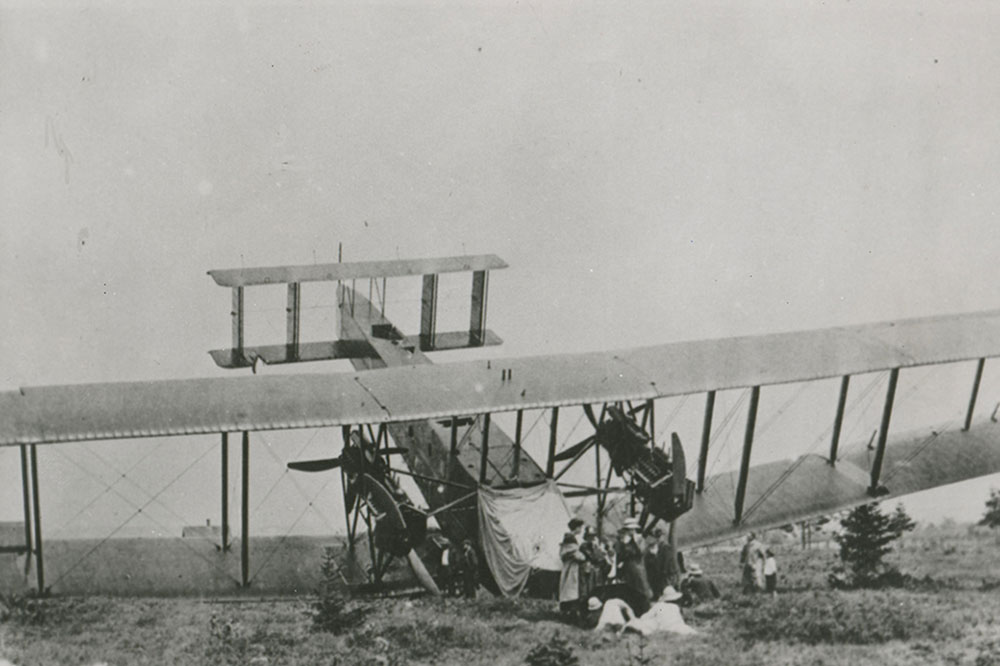Beginnings: The Great Atlantic Air Race (1919)
Harbour Grace’s aviation story began in the spring of 1919 with the arrival of the Handley Page Atlantic, then considered the largest biplane in the world. The aircraft was due to compete in the Great Atlantic Air Race, a competition organized by the London Daily Mail.
The first plane to cross the Atlantic Ocean would win £10,000 and significant prestige. As the most easterly point between North America and Europe, Newfoundland provided the ideal ‘hop off’ point. The race’s competitors flocked to the island with their planes in tow.
Rear Admiral Mark Kerr and his team of military men were considered favorites to win the competition among the English elite. They chose Harbour Grace as their takeoff location.
Though smaller then the capital, St. John’s, Harbour Grace was a major economic centre, with a long history in the fishery. However, there was no infrastructure to support aircrafts – a relatively new technology in 1919.
To facilitate their crossing attempt, Kerr and his crew cut a $25,000 cheque to prepare a runway 800 yards long by 170 yards wide, not far from the Immaculate Conception Cathedral. Small farms, houses, and gardens, separated by rock pile fences, had to be dismantled to accommodate the strip. This runway became known as ‘Handley Page by the Sea.’
The Atlantic arrived in 105 large crates on the RMS Digby and was shipped by rail to Harbour Grace. Once there, the crates proved difficult to transport across the runway. They actually used the aircraft’s wheels to move the crates. Once assembled, the aircraft weighed 14 tons and required a steam tractor to pull its weight.
Despite weeks of preparations, Kerr and his crew experienced delays due to mechanical issues identified during a test flight to St. John’s. Before these issues could be resolved, John Alcock and Arthur Brown departed from St. John’s in their Vickers Vimy aircraft and captured the Daily Mail prize.
Kerr’s transatlantic flight was called off and he and his crew decided on a tour of the United States. They left Harbour Grace on July 4, 1919, heading for New York. The crews’ aircraft problems continued to persist, however, and their tour was eventually cancelled.
Though this first attempt at a transatlantic crossing was a failure, Harbour Grace would soon have its day of aviation glory.




